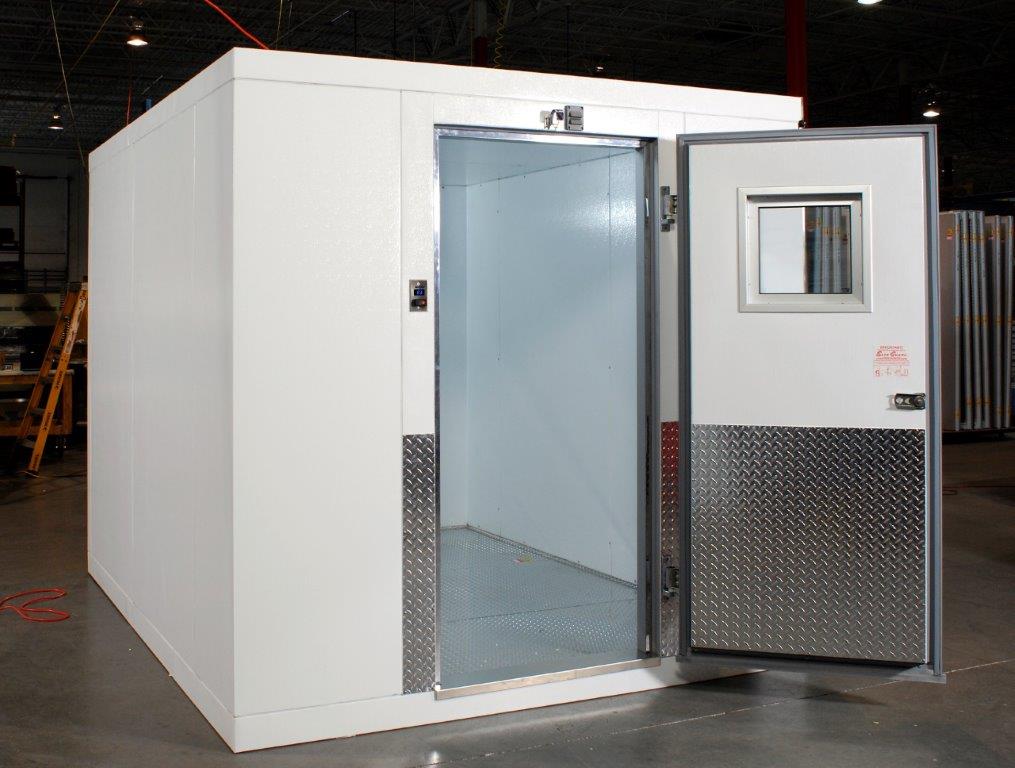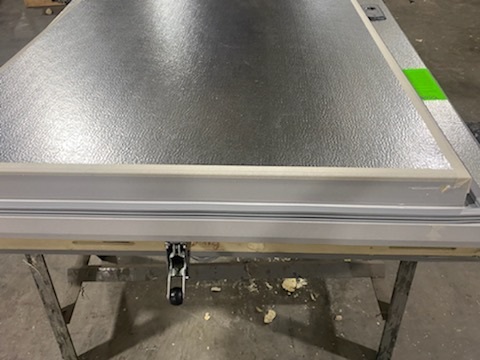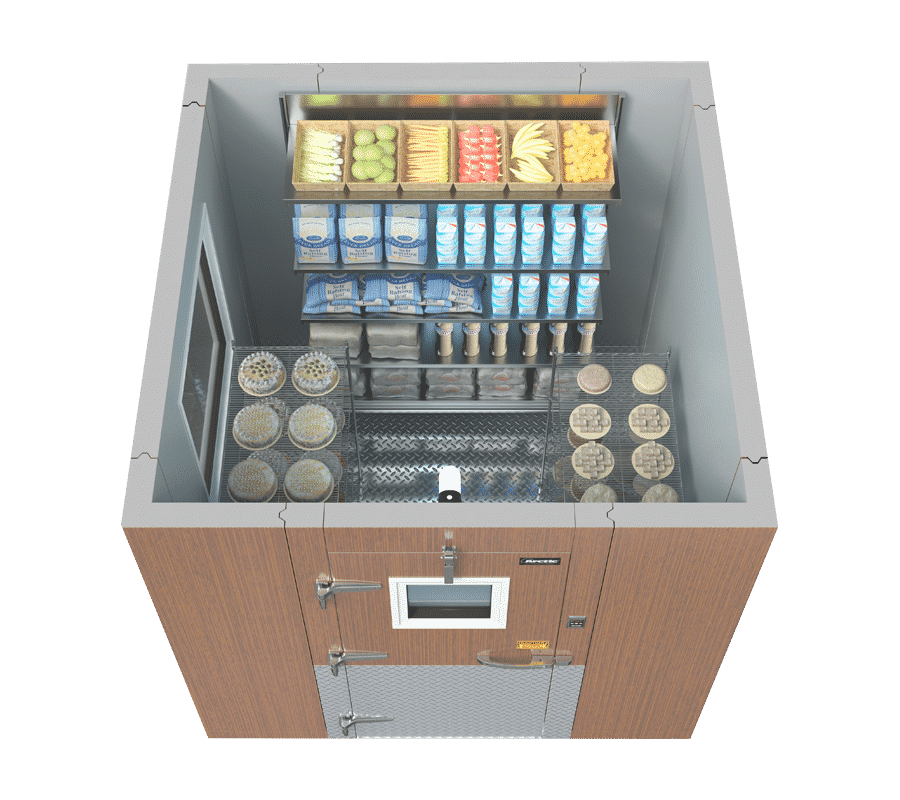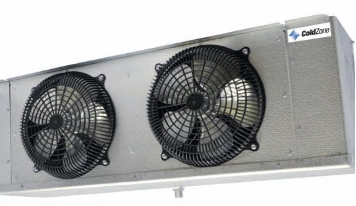Walk-in freezers can be one of the most expensive pieces of equipment for many businesses. To get the most value and use out of your walk-in freezer, you need to perform regular maintenance. Similarly to walk-in coolers, freezer maintenance requires careful attention – especially when it comes to these five common mistakes to avoid in your walk-in freezer maintenance.


1. Proper Freezer Maintenance Schedule
The age-old saying goes “an ounce of prevention is worth a pound of cure.” This is definitely true with walk-in freezer maintenance. Much like cars or other complicated mechanical objects, avoiding dealing with small problems in a walk-in freezer will, more often than not, lead to bigger, preventable issues in the future.
It may sound obvious, but a common maintenance mistake with walk-in freezers is to overlook maintenance altogether. It’s easy to assume the freezer will work every day into the future, until the day that it doesn’t. However, by that point, the problem might be major.
Many businesses keep thousands of dollars worth of products in their walk-in freezers at any time. If the freezer stops working, a lot can be on the line. Being a conscious walk-in freezer owner, you aren’t going to let this happen, right?
The best way to prevent catastrophic freezer failures is to set up a regular maintenance schedule with a qualified technician. The frequency of this regular maintenance will differ based on the age of your unit, its location, its size, and its usage. This is a great way to drastically reduce the chances of your freezer spontaneously breaking. Your regular maintenance technician will charge a fee, but it’s always worth it if they prevent a broken freezer!


2. Keep Your Doors Sealed Tight
One of the most common mistakes in walk-in freezer maintenance is overlooking the importance of the door gaskets. The gaskets are the rubbery material that lines the doors of your walk-in freezer. Over time, gaskets will get misshapen or torn due to standard wear and tear. However, even a tiny imperfection can cause a leak big enough to throw your system off. If the doors of your freezer or cooler don’t seal properly, multiple undesirable outcomes are possible.
First, your energy usage could be much higher. The unit will need to use more energy if warm air constantly sneaks through the doors than if there were a perfect seal. This added energy can add up to significant costs in electricity over the course of months and years.
Second, an imperfect door seal allows warm, humid air to enter your walk-in freezer. This humid air carries a lot of water vapor in it than the air inside the freezer. The vapor in the warm air will turn into ice as it cools. This ice can build-up on the inside of your freezer, either around the door, on the ceiling, on your product, or even on the evaporator unit (more on that below) or the fans. You should always be suspicious of ice inside your freezer. If you notice substantial ice building up anywhere inside the freezer you should contact a technician.


3. Check the Temperature Regularly
When functioning properly, your walk-in freezer should maintain a steady temperature. It may fluctuate a degree or two depending on how often the doors are being opened and closed. For the most part, however, it should stay within a few degrees of where you set the thermostat.
If you have an electronic temperature log, check it frequently for any unusual temperatures. If you don’t, keep a manual log of the temperature with entries of the temperature at least three times a day. This will ensure you keep a pulse on the consistency of the temperature of your freezer.
If the temperature begins to move around much more than it previously had, something is wrong with the freezer. There are various problems that can cause the temperature to fluctuate, so it is best to consult a technician to troubleshoot the problem.


4. Human Error Often Leads to Common Mistakes
We are all humans, which means we all make mistakes. However, many of these mistakes are avoidable with a little training. As with any expensive equipment your staff interacts with daily, you want to ensure they know how to properly use the walk-in freezer.
In many business settings, multiple people will open and close the doors to a walk-in freezer in a single shift. The products inside the freezer may be moved around by many different employees simply looking to make space.
If the staff hasn’t been properly trained in the basics of the walk-in freezer, they can cause costly maintenance issues. Two common mistakes people make in every-day use of walk-in freezers are leaving the doors open and storing products too close to important parts of the freezer.
When the doors of a walk-in freezer are left open for even a short amount of time, tons of warm, humid air replaces the dry, cold air inside. As noted above with the door gaskets, this humid air can cause ice build-up within the freezer. Make sure your staff knows to open and close the doors as quickly as possible to avoid this.
Products stored in front of the evaporator or fans within the walk-in freezer reduce the air circulation. Reduced air circulation prevents the freezer from achieving a consistent temperature and maximum efficiency. It will also increase the amount of wear and tear on the compressor. All of these issues can lead to further maintenance issues.
It’s best to give your staff a quick lesson on using the freezer properly to prevent these common mistakes.


5. Make Sure the Defrost Cycle Works
The proper functioning of an evaporator unit of a walk-in freeze is crucial to the freezer’s success. This unit is a long, coiling tube that absorbs the heat from your freezer. Essentially, it keeps everything cold.
However, because the tube is very cold, vapor from the air freezes onto it as ice. This ice creates a barrier between the evaporator unit and the air, significantly reducing its ability to absorb heat from your freezer.
Freezers should periodically engage in a defrost cycle. This cycle ensures that any ice present in the evaporator melts, thus exposing the evaporator coil directly to the air again allowing it to cool more efficiently. For various reasons, sometimes the defrost cycle doesn’t engage or it engages but doesn’t defrost completely. If the defrost cycle fails to engage for too long, or if it does but it is not able to melt all the ice present, it will cause unnecessary wear and tear on all the components in the freezer, and ice will accumulate causing something to break.
Make it a habit to regularly check the evaporator coils to see if they have ice accumulating on them. This will ensure you keep a pulse on whether the defrost cycle is working and whether ice is becoming an issue in your freezer. Also, check with your technician to make sure they clean and check your evaporator coils during each visit, and perform an inspection of your defrost components, drain lines, and drain heater cables.
Hopefully by keeping these common mistakes in mind, you’ll stay on top of your walk-in freezer maintenance and keep a functioning unit for years to come!

